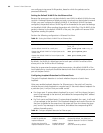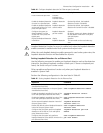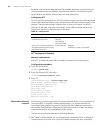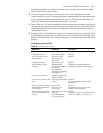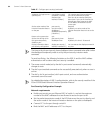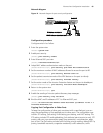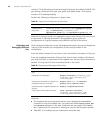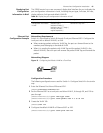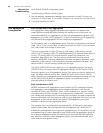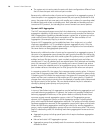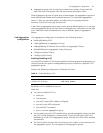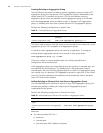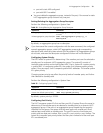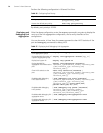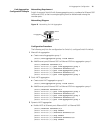
68 CHAPTER 3: PORT OPERATION
Ethernet Port
Troubleshooting
Fault: Default VLAN ID configuration failed.
Troubleshooting: Take the following steps.
1 Use the
display interface or display port command to check if the port is a
trunk port or a hybrid port. If it is neither, configure it as a trunk port or a hybrid port.
2 Configure the default VLAN ID.
Link Aggregation
Configuration
Brief Introduction to Link Aggregation
Link aggregation means aggregating several ports together to implement the
outgoing/incoming payload balance among the member ports and enhance the
connection reliability. Link aggregation includes manual aggregation, dynamic LACP
aggregation, and static LACP aggregation. In terms of load sharing, link aggregation
may be load sharing aggregation and non-load sharing aggregation.
For the member ports in an aggregation group, their basic configurations must be the
same. That is, if one is a trunk port, the others must also be; when it turns into access
port, then others must change to access port.
The basic configuration includes STP setting, QoS setting, VLAN setting, and port
setting. The STP setting includes STP enabling/disabling, link attribute (point-to-point
or not), STP priority, path cost, max transmission speed, loop protection, root
protection, edge port or not. The QoS setting includes traffic limiting, priority
marking, default 802.1p priority, bandwidth assurance, congestion avoidance, traffic
redirection, traffic statistics. The VLAN setting includes permitted VLAN types, and
default VLAN ID. The port setting includes port link type.
The Switch 5500-SI 28-Port can support up to 14 aggregation groups, the Switch
5500-SI 52-Port can support up to 26 aggregation groups, and the Switch 5500-EI
Series can support up to 32 aggregation groups. Each group can have a maximum of
eight 100 Mbps Ethernet ports or four Gigabit SFP ports. For the Switch 5500-SI
series, the ports in an aggregation group must physically belong to the same unit, but
for the Switch 5500-EI series, an aggregation group can contain ports which
physically belong to different units.
Brief Introduction to LACP
IEEE802.3ad-based Link Aggregation control protocol (LACP) implements dynamic
link aggregation and disaggregation and exchanges information with the peer
through LACP data unit (LACPADU). When LACP is enabled on it, the port notifies,
through sending LACPDU, the peer of its system priority, system MAC, port priority,
port number and operation key. On receiving this information, the peer compares the
received information with that stored at other ports to determine which ports can be
aggregated, so that the two parties can agree on adding/deleting which port
into/from a certain dynamic aggregation group.
The operation key is a configuration set generated by LACP based on port setting
(speed, duplex mode, basic configuration and management key). When LACP is
enabled, the management key of a dynamic aggregation port is 0 by default, but the
management key of a static aggregation port consists with the aggregation group ID.
For a dynamic aggregation group, all member ports must have the same operation
key, while for a manual or static aggregation group, only the active member ports
must have the same operation key.



